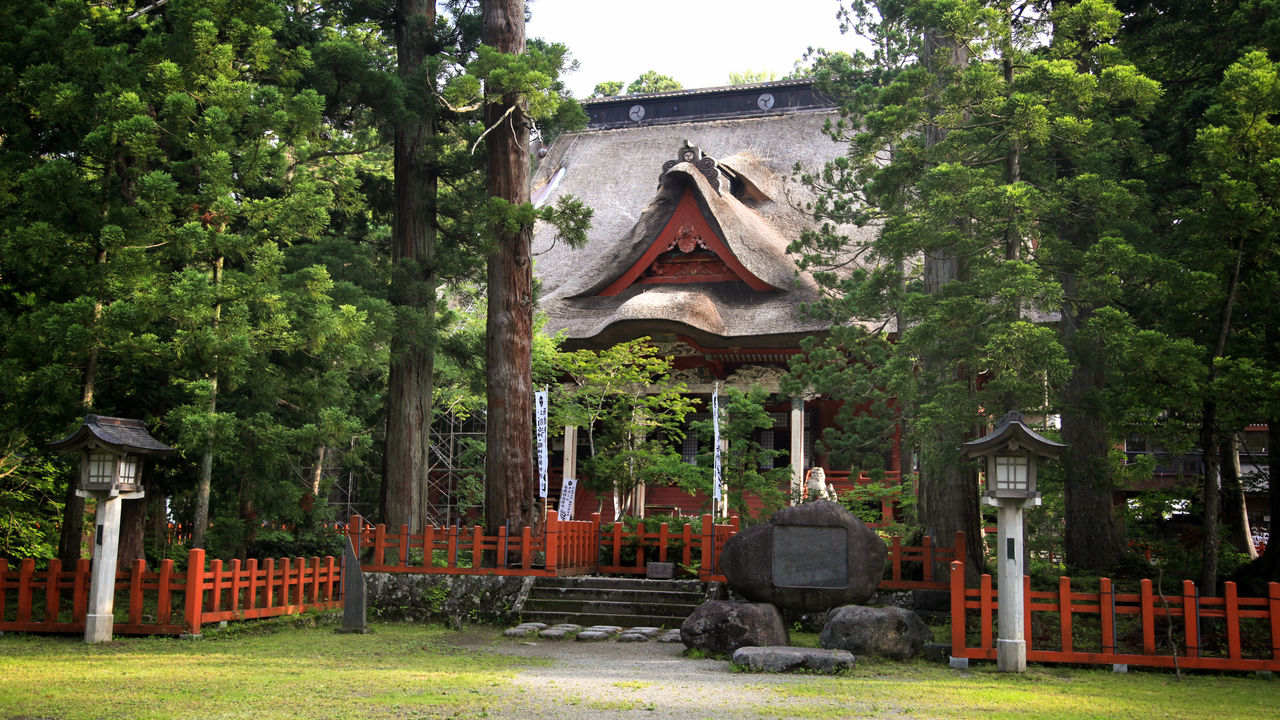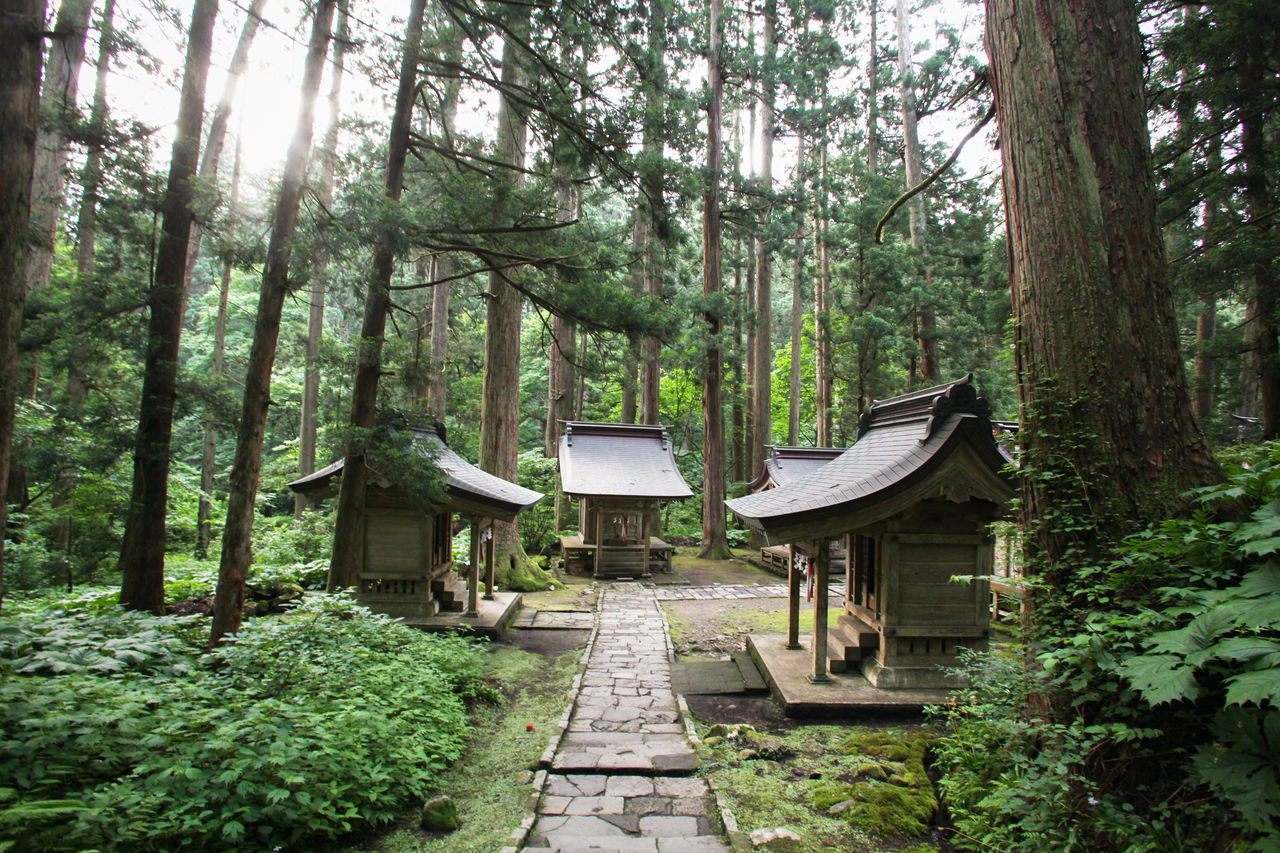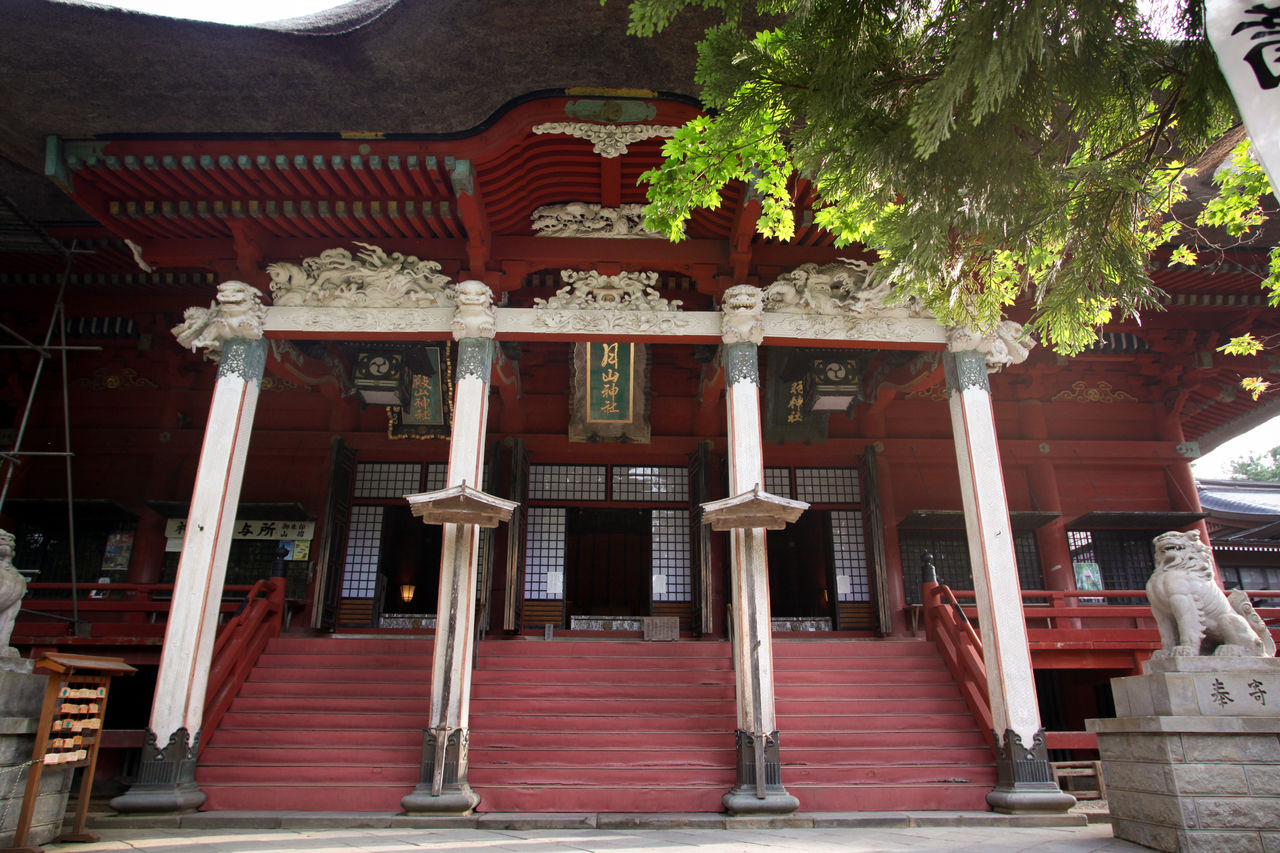
Yamagata’s Dewa Sanzan: A Preserve for the Sacred Traditions of Mountain Worship
Guideto Japan
Culture- English
- 日本語
- 简体字
- 繁體字
- Français
- Español
- العربية
- Русский
Three Peaks that House Japan’s Oldest Form of Faith
The Dewa Sanzan, the three sacred mountains of Dewa, are located in the middle of Yamagata Prefecture. They are Mount Gassan (1,984 meters), Mount Yudono (1,504 meters), and Mount Haguro (414 meters).
Graceful Mount Gassan has been a sacred mountain since the most ancient of times. Its huge boulders and striking rock formations have long been thought to have miraculous powers. Mount Yudono likewise has sacred reddish-brown boulders, while Mount Haguro is noted for its old-growth trees and deep, ancient forests. Since the prehistoric Jōmon period, Japanese nature worship has been based on the belief that spirits reside in everything, from mountains and seas to trees and rocks, and the three mountains of Dewa are prime examples of how this belief has been preserved through the centuries.
Each of the three mountains has its own shrine: Gassan Shrine, Yudonosan Shrine, and Ideha Shrine (on top of Mount Haguro). Together, the three are referred to as the Dewa Sanzan Shrines. Because the Gassan and Yudonosan shrines cannot be accessed in winter when their tall mountains are covered in deep snow, there is a special collective shrine dedicated to the gods of all three mountains on the grounds of Haguro’s Ideha Shrine. This collective shrine is called the Sanjingōsaiden. It can be reached by driving up Mount Haguro on a toll road, but taking the walking route is a better way to experience the mystic wonder that enthralled the ancient mountain ascetics.
 The approach leading to the sacred mountaintop.
The approach leading to the sacred mountaintop.
The Oldest Five-Storied Pagoda in the Tōhoku Area
Pass through the Zuijinmon gateway to sacred Mount Haguro and you will see before you a stone stairway of 2,446 steps stretching some 1,700 meters along the face of the mountain. The steps were built over a period of 13 years in the Edo period (1603–1868). It generally takes about one hour to climb to the top.
The first flight of steps descends a steep slope lined with ancient cedars believed to be several hundred years old. This route takes you to the oldest five-storied pagoda in the Tōhoku region, built more than 600 years ago. The 29-meter high pagoda is an elegant wooden structure, each roof covered with thin wooden tiles in a traditional style called kokerabuki. It was designated a national treasure in 1966.
Right next to the pagoda is a huge Japanese cedar (Cryptomeria japonica) with a network of roots extending 10.5 meters and a trunk circumference of 8.25 meters that is estimated to be a thousand years old. Known as the Jijisugi, the ancient monolith is designated as one of Japan’s natural monuments.
 The five-storied pagoda stands quietly in the old-growth forest.
The five-storied pagoda stands quietly in the old-growth forest.
The route changes to a relentless ascent after the pagoda. Look closely and you will see that the stone steps are inscribed with various motifs, including gourds and tokkuri sake bottles. The legend is that there are 33 motifs, and if you find them all your most heartfelt wishes will be granted. In any case, searching for the motifs may help to make the strenuous climb a little easier. A tea stall along the way provides refreshment and a place to rest.
At the end of the long steep climb is the Sanjin Gōsaiden. It has three entrances, one for each of the three mountain shrines: Gassan in the center, Ideha to the right, and Yudonosan to the left. The large building is topped with a 2.1-meter thick thatched roof and its interior is finished in lacquer throughout. The Gassan Shrine is dedicated to the spirit of Tsukuyomi-no-mikoto, an embodiment of the moon and god of the calendar. The Ideha Shrine is dedicated to Ideha-no-kami, the local deity of the Dewa region. Finally, the Yudonosan Shrine is dedicated to the great mountain spirit of Ōyamatsu-no-kami.
The pond in front of the collective shrine is known as the Mirror Pond (kagami ike) because of the hundreds of bronze mirrors that have been excavated from it. They are believed to have been placed there as offerings by devout pilgrims. The pond itself has a mystical air and has long been an object of worship in its own right.
 The Sanjin Gōsaiden is dedicated to the spirits of all three sacred mountains.
The Sanjin Gōsaiden is dedicated to the spirits of all three sacred mountains.
Access: From JR Tsuruoka Station take the Shōnai Kōtsu bus to Hagurosan (around 50 min).
(Originally published in Japanese. Text by Toya Manabu. Photographs by Nakano Haruo. Banner photo: The Sanjingōsaiden.)